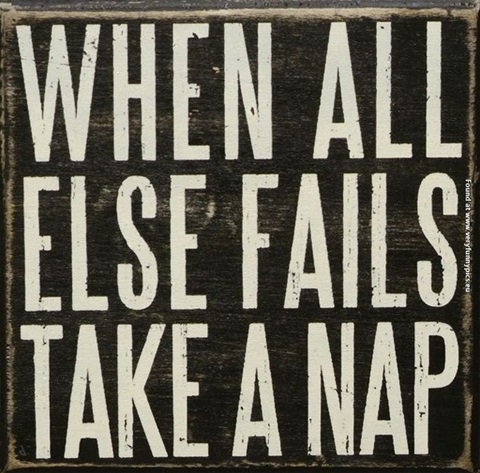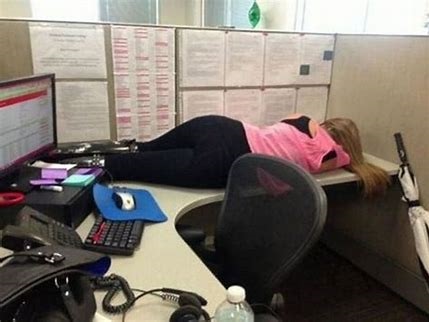DONT RESIST A REST ...
National Public Sleeping Day encourages a mid-day nap no matter where you are. Even though napping isn’t for everyone, most people find they can enjoy an afternoon siesta once they figure out the ideal type of nap for them.
The 28th February is a day for anyone and everyone to take a nap, whether it by at the park, in the cinema, on a bus, train, or tube or any other public place. However, it may not be a good idea to take that nap at your desk during work! Unless of course its just a quick power nap!
Some employers bang on trend recognise the value of a nap as there are certain types of naps that will fuel the brain and recharge our batteries.
Naps can also improve productivity, decrease health risks and improve morale, those forward thinking employers want to reap these benefits and high-tech ‘sleep pods’ are situated in the likes of Google’s headquarters in London and elsewhere and at Nike’s headquarters in Portland, Oregon, there is an initiative offering employees hours to suit their chronotype – the biological clock that dictates whether they are naturally an early riser or a midnight oil-burner.
Depending on your sleep schedule and daily routine, you may require a longer or shorter rest period. Or, you may find that snoozing at odd hours helps get you through the day while supplementing your shuteye. Poorly timed naps can lead to insomnia, making you feel more tired the next day and perpetuating an endless cycle of excessive daytime drowsiness.
As there are so many different types of naps we can try out for size; heres a few to get the zzz’s into your life in preparation for the 28th February.
The Power Nap – this nap should last between 10 to 20 minutes long. Its purpose is to give a boost of energy to get us through the rest of the day. The beauty of this type of nap is it won’t leave us drowsy like some longer naps might and will also allow us to fall asleep at a decent time at night. The ideal time to lie down is between 1 p.m. and 3 p.m.
The Coffee Nap -this nap involves downing a cup of coffee and then immediately going to sleep for 20 minutes. It sounds weird, but it typically works. The reason is that caffeine takes several minutes to enter your bloodstream.
So, when you drink coffee and then sleep for 20 minutes, by the time you wake up, the caffeine is starting to take effect. Not only should you feel more rested from your short sleep, but you should also get an energy boost from the caffeine.
Make sure you drink the coffee quickly so that it can enter your system in one fell swoop. If it’s too hot when you make it, drop a couple of ice cubes into the cup (or drink an iced coffee), and then it’s lights out.
The Hangover Nap – this nap is about 30 minutes long, 10 minutes too many, leaving us loopy and wanting just to stay asleep. We will eventually snap out of it feeling much like we had a Power Nap, but it may take a bit of effort before those benefits are felt.
The Brainiac Nap – this nap lasts about 60 minutes and includes the deepest sleep. While we may feel a little grogginess upon waking, much like the Hangover, our ability to recall facts, names, and faces, will be improved. This type of nap may be the best nap after a round of studying or before a big test.
The King Nap – this nap lasts about 90 minutes and is typically a full cycle of sleep. It will also include REM or a dream stage. This nap avoids the hangover like the power nap does and improves creative thinking and motor memory, but night time sleep may become elusive.
The Disco Nap – this nap is perfect if you’ve got to rally for a late-night party or a night out on the town, resting before you go out can give you the second wind you need to have a blast. As it’s not uncommon for a party or club to get going at 11 p.m., which might be around your bedtime. To ensure that you’re not one of those partygoers that fall asleep on the pile of coats in the spare bedroom, plan a 90-minute snooze session before you go out. It should function as a kind of mini-sleep. Ideally, you’ll wake up feeling ready to go.
Combine this strategy with a coffee nap, and you could feel even more revived. To help prevent disrupting your sleep schedule, don’t oversleep the next day. Do your best to wake up as close to your regular waking time as possible.
The Planned Nap – These are the types of naps that you take before you actually get tired. It’s one of those moments where your body tells you to rest for a bit in preparation for a long study-night or just a preparation for an activity.
The Emergency Nap –this type of nap is when you feel the urge to shut your eyes. This means that your body is telling you that it is exhausted and would like some rest. If you’re driving and start feeling this, pull over and get some needed rest.
The Habitual Naps – This is your body clock reacting to naps that are taken in frequent patterns. For example, sleeping at 10 p.m. every day would eventually get your body sleepy at 10 p.m. This is then triggered wherever you are. As long as your body clock tells you it’s time to sleep.
When it comes to napping, choose wisely. Know first what you want to get out of your nap, before you decide when and for how long you’ll sleep.
The timing and duration of your nap depends a lot on your individual needs and circumstances. Those needs and circumstances change over time—which mean your nap needs change, too.
Hope this has proved useful and I don’t know about you – but im off for a bit of shut eye!
Use #PublicSleepingDay to post on social media.






